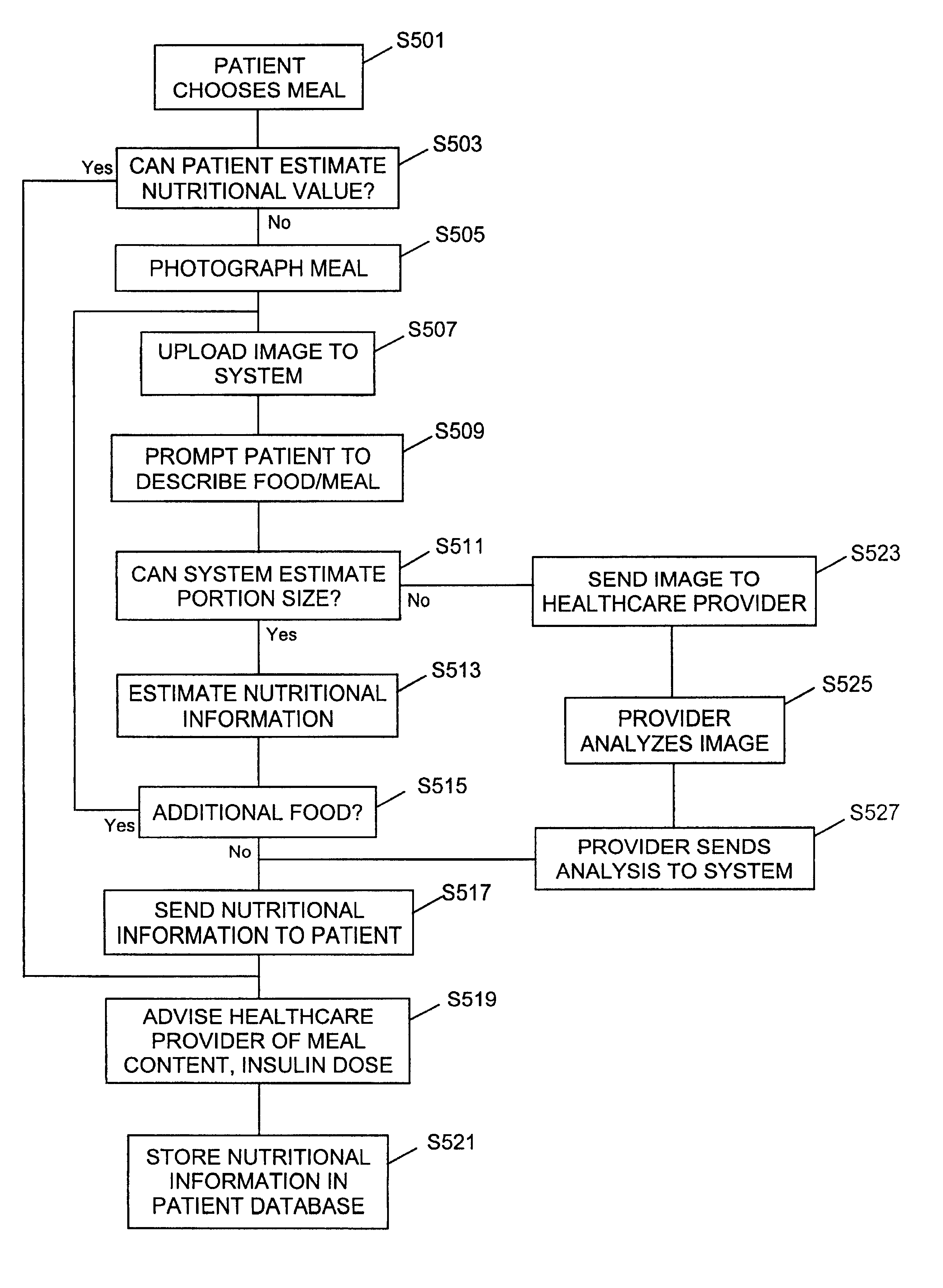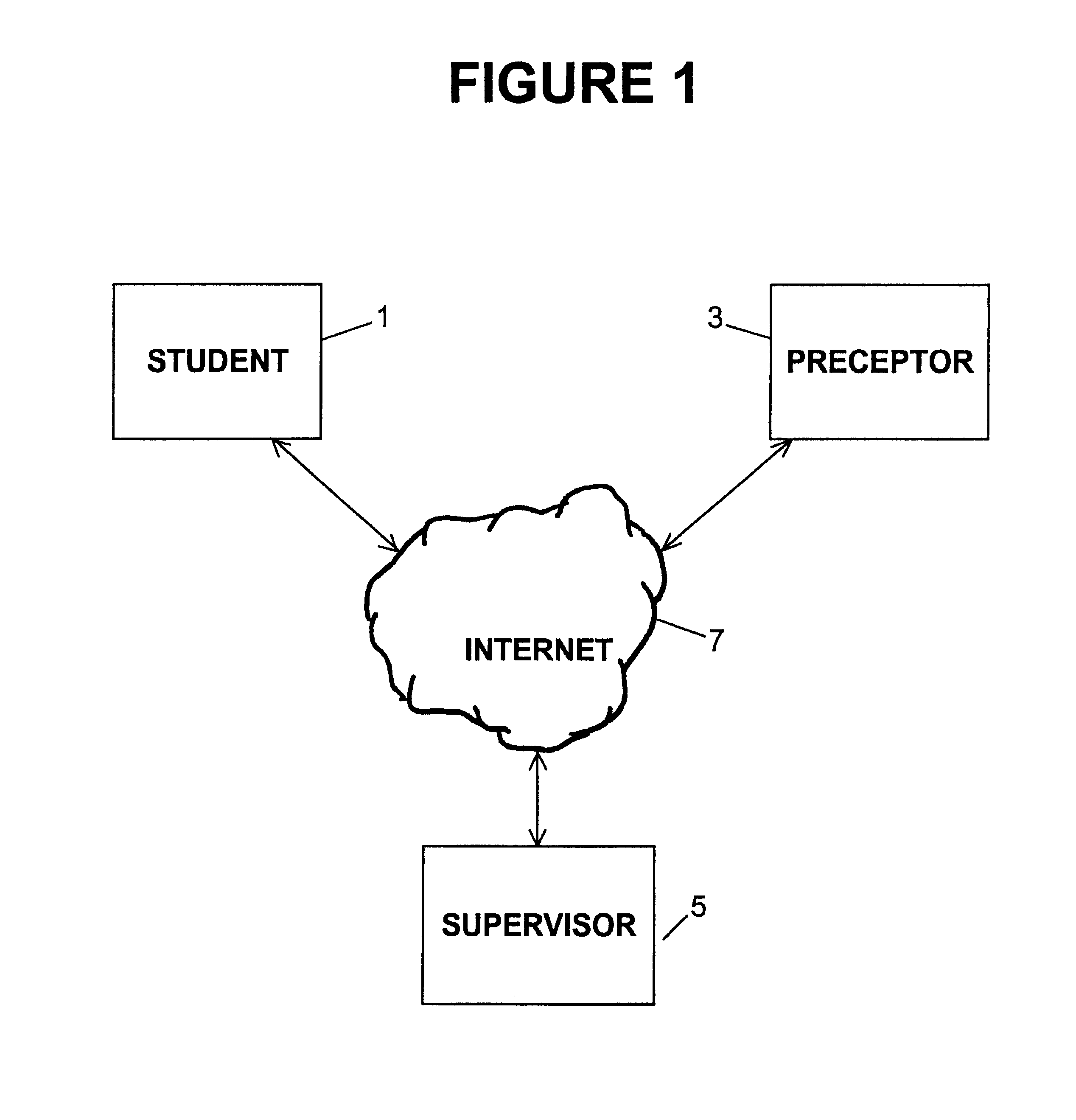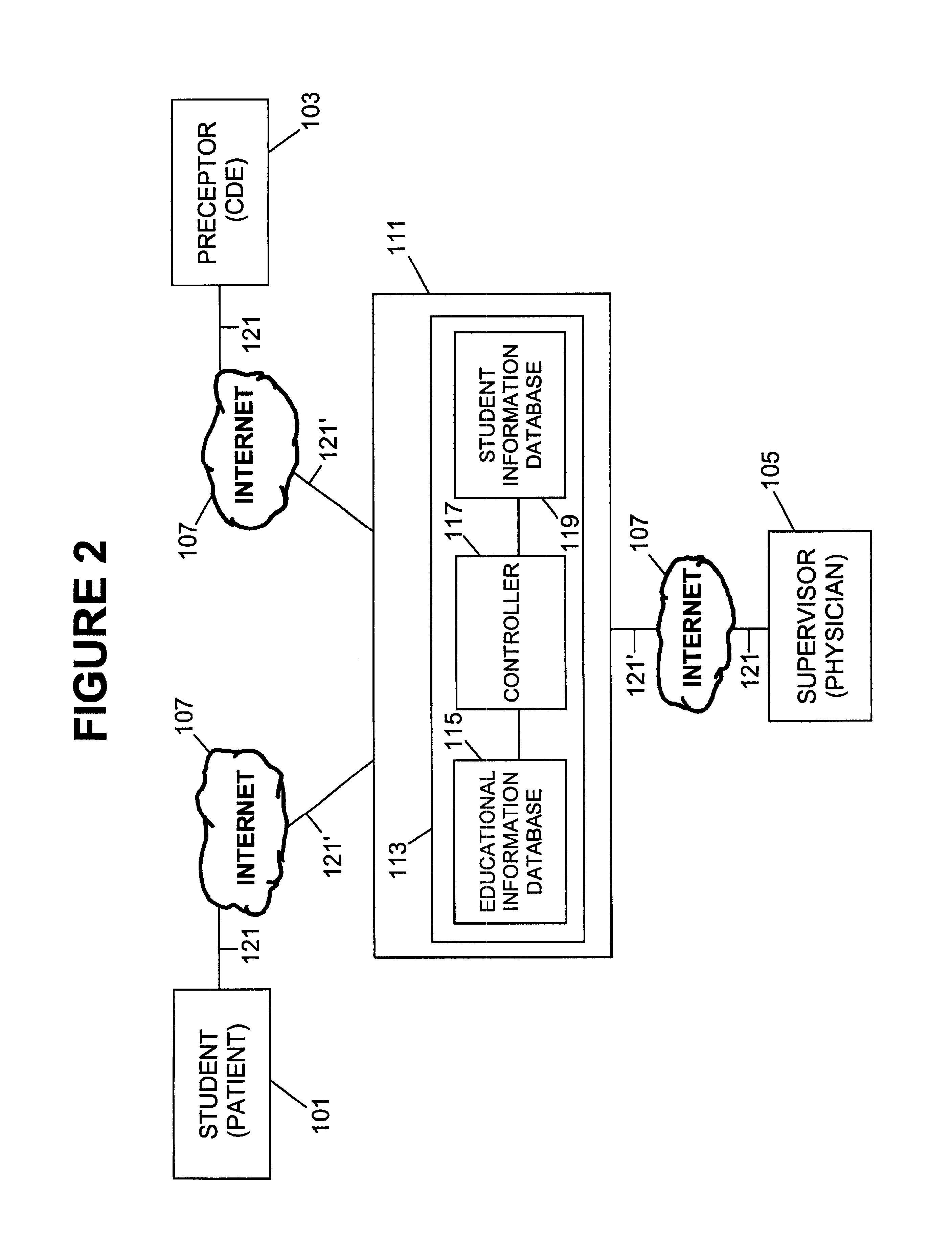Adaptive interactive preceptored teaching system incorporating remote image monitoring
a teaching system and interactive technology, applied in the field of adaptive interactive teaching system, can solve the problems of insufficient content documentation, inability to document the reader's competence in a subject, and inability to provide a cohesive educational framework for encyclopedias, etc., to achieve the effect of improving the quality of patient car
- Summary
- Abstract
- Description
- Claims
- Application Information
AI Technical Summary
Benefits of technology
Problems solved by technology
Method used
Image
Examples
Embodiment Construction
[0061]The present invention relates to a system for remote learning in which at least some of the educational content sent to the student is selected based upon one or more identifying characteristics of the student. In other words, this invention adapts the educational program to take into account the identity of the student. Although educational content is delivered automatically, the system is preceptored in that the system keeps track of each student's performance. Where a student's performance falls below some predetermined minimum level, the system alerts the preceptor, who can take suitable action such as making direct personal contact to help the student learn.
[0062]The following definitions are used in the description of this invention:
[0063]CDE: certified diabetes educator, a nurse or other health professional having specialized training in the care and monitoring of diabetics.
[0064]Content Matrix: refers to a collection of educational modules which are selected and sent t...
PUM
 Login to View More
Login to View More Abstract
Description
Claims
Application Information
 Login to View More
Login to View More - R&D
- Intellectual Property
- Life Sciences
- Materials
- Tech Scout
- Unparalleled Data Quality
- Higher Quality Content
- 60% Fewer Hallucinations
Browse by: Latest US Patents, China's latest patents, Technical Efficacy Thesaurus, Application Domain, Technology Topic, Popular Technical Reports.
© 2025 PatSnap. All rights reserved.Legal|Privacy policy|Modern Slavery Act Transparency Statement|Sitemap|About US| Contact US: help@patsnap.com



